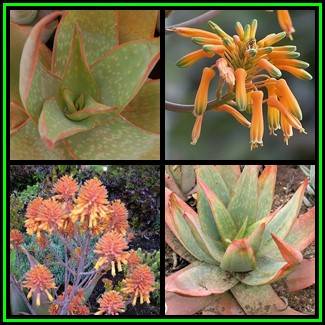
Aloe buhrii - 5 Seed Pack - Rare Endangered Indigenous Succulent - Worldwide Shipping, NEW
Check my rate
| Main centres: | 1-3 business days |
| Regional areas: | 3-4 business days |
| Remote areas: | 3-5 business days |

| Main centres: | 1-3 business days |
| Regional areas: | 3-4 business days |
| Remote areas: | 3-5 business days |
Aloe buhrii, commonly known as Elias Buhr's Aloe is a beautiful stemless aloe with 40cm long, red-margined smooth to minutely toothed leaves that have pale longitudinal striations and mature with a purplish hue that is dotted with white "H" shaped spots. This plant is usually a solitary rosette, but older plants have multiple heads. In spring appear the multi-branched inflorescences with terminal capitated clusters of flowers that vary in colour from yellow to orange. Aloe buhrii prefers full sun to light shade.
Their natural adaptation to harsh and often arid climates makes aloes outstanding subjects for the water-wise garden. Aloes can tolerate long periods of drought, but it is not true that watering should be withheld to obtain optimal growth. Stressed plants are more susceptible to insects and pests. Plants flourish, flower better and are more resistant when given adequate water during the growing season. However, be very cautious not to overwater aloes because they may rot if they stay wet for too long. Adequate drainage is essential. Plant smaller aloes in raised beds and only water them when the top 5cm of soil has dried. Aloe is a genus in the Asphodeloideae family containing about 600 species of flowering succulent plants. The most common and well known of these is Aloe vera. The genus is mostly native to Africa with about 125 being indigenous to South Africa. About 405 species can be found in Africa while about 45 species are found in the Arabian Peninsula. Socotra has 4 natural species and the Mascarene and other Western Indian Ocean Islands share about 7 species. Madagascar, for its size, has a pretty extensive collection of about 145 species. |